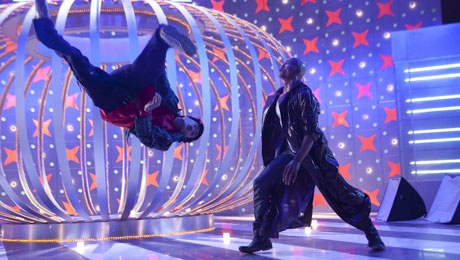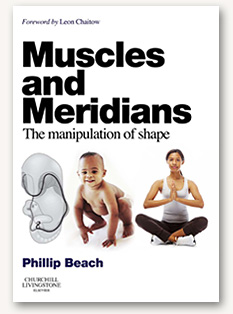African Martial Arts
/The book breaks a lot of new scholarly ground, it really challenged me to think about culture and history in new ways. It’s not light reading.
Obi begins with a Japanese definition of Marital arts as an exacting movement transmission of routines, movement qualities, and techniques which are taught generation to generation and which are used to instill ethics. African martial arts and dance generally meet this definition.
He then goes into a detailed history of several different peoples from Central and West Africa and explains the cultural origins of their specific martial arts traditions. The details are fascinating. For instance Kandeka boys of Angola were taught to slap fight from early childhood. By 6 or 7 they were left with older boys in charge of young calves, while the women went off to farm and the men took the full grown cows and bulls to distant grazing areas. The boys learned to socially dominate the calves using head butts, and by the time they were adults they would have complete control of the herds by this method. He later explains that this extraordinary skill becomes the preferred method of execution used by Capoeirista secret slave societies (bonded communities?) in Brazil.
The Kandeka boys also learned stick fighting. They would begin with leaf covered branches to slow the fight down, as the leaves fell off, the fight would become faster. As skill in avoiding injury developed the sticks would get thicker. Adult men would carry these sticks or clubs in their belts at all times and were experts at throwing them as well.
This same group, made extensive use of inverted kicking in puberty rituals, in duels and other contexts. He makes a very good case that this is the origin of Capoeira’s most distinctive fighting techniques.
In discussing the history of Nigeria, he explains that secret societies played a key roll in maintaining order and regulating violence. Knowledge of wrestling and head butting was very widespread in the form of competitive games, it was used for settling disputes of honor. There were also some extraordinary defense oriented groups on the border regions who made taking a head in battle a prerequisite of adulthood, which Obi contrasts with the interior groups who had strong rules against bloodshed.
The second part of the book deals with North America. Obi did extensive research and fieldwork in South Carolina, and he sheds new light on the Seminole/Gullah Wars. I loved this part of the book. He succeeded in reframing North American slavery in my mind. I really didn’t know that the Gullah fought a 50 year war, set up a strong hold in Mexico and after the Civil War were invited to join the US Cavalry as “the Buffalo Soldiers” made world famous by Bob Marley. I certainly didn’t know that they used a style of inverted high kicking!
There is so much in this book to think about. Obi, after months of trying to find African Martial Artists in South Carolina, and being told that nothing of the sort exists, is finally excepted as a student by the first person he had originally asked. The fact that he was Nigerian and already knew a style of competitive leg wrestling did eventually help him break in to the secret society. He was told that his (Nigerian) style of wrestling had been very popular a generation ago, with many champions the locals could name, but at the same time it was totally secret. If you weren’t an insider, you didn’t know about it, you couldn’t know about.
The third part of the book deals with Francophone parts of the Caribbean, and the forth part of the book deals with Brazil. There are tons of cool details here, like his discussion of folding blades held with the toes.
Obi raises three striking controversies. The first is a challenge to the Albion Seed Theory. The second is a challenge to the notion that slaves weren’t able or allowed to fight. And the third is that the martial traditions of honor and secret societies allowed Africans in the Americas to maintain their martial arts traditions through dance, ritual, and games.
There are two main theories of cultural development in the United States. The first is the melting pot theory which holds that we are a mix of a bunch of different cultures. The other is the Albion Seed theory which holds that there are four primary folkways which all come from England and which have been totally dominant in determining American values and behavior. Long time readers know that I’m a fan of the Albion Seed theory (given that name by it’s primary proponent David Hackett Fischer). Obi challenges Fischer’s scholarship of fighting traditions. First he says that boxing was a much later development, and didn’t exist in early America. Second he says that “gouging” was the primary fighting style of the English who came here. That is not a big departure from Fischer’s “rough and tumble rasseling,” they are essentially talking about the same art. But Obi asserts that its primary characteristic was eye “gouging” and that it usually went by that name. The friendlier style of stand up grappling, “catch as catch can” was also prominent. This is very important because it leads to Obi’s assertion that African-Americans had unique ways of fighting. At the meta level, he seems to be a supporter of the Albion Seed approach, namely that there are a few base cultural folkways which dominate over the centuries. However, he argues that there are clearly a few African cultures which have remained stable cultural influences to this day.
African Americans continued to train slap fighting, as anyone who went to an urban public school in the U.S. like I did, can attest. They also practiced “knocking” or head butting, kicking and distinctive styles of wrestling. The knocking is particularly interesting. The history of American Football is nearly always described as a development of the Ivy League schools. But it seems fair to ask why the American version of Football/Rugby developed with direct head to head smashing and no other Euro-origin country has developed anything like it. Obi gives examples of African American Sailors sharing the art of head butting as both a martial art and a form of entertainment. Obi does not come out and say this, but I will. Football has some African Cultural roots.
Okay, did bonded people fight? Obi is utterly convincing on this account. They did. It’s true that they were often forbidden to fight under the rules of slavery and there was a death penalty for attacking a white person, but that simply didn’t stop them. They fought each other a lot, and they fought whites too and sometimes got away with it, particularly because whites would have been embarrassed to admit they weren’t in control and because slaves were valuable so there was a strong impetus to try and resolve problems.
African-Americans maintained their culture through secret societies and what Obi calls Tricknology! That is, the art and culture of hiding your culture, of subsuming it, obscuring it, and of pretending it isn’t happening when it actually is. Celebrations with dance, and singing, are obvious places where this happened, and where ritual and cultural values were passed on. He argues that fighting culture played a key role in the transmission of culture, but that it was well hidden.
And that leads us to Honor. Bonded people dealt with the humiliation and loss of autonomy by maintaining a very strong sense of honor. Fighting style was and still is a key element in the maintenance of this sense of honor. Who, what, when, where and how a person fights, are all factors which determine a person's honor with in a society. When you train to fight through dance and play, it has a profound effect on the way you move and interact, the way you make judgements, and the way you make friends. It forms your world view.
I am deeply appreciative of T. J. Desch Obi for all his research and scholarship.
All of this is very personal for me for numerous reasons including that I studied Congolese Dance with Malonga Casquelourd for about 3 years, about 20 years ago. I also studied Katherine Dunham’s technique for teaching Haitian Dance for about 4 years around the same time. It was a very intense training period for learning Chinese Martial Arts too, as I steadily increased the number of hours I was training gongfu from about 3 a day to 6 a day.
Katherine Dunham invited Malonga to come teach in the United States in the early 70’s. Malonga’s father was a military leader, so he was able to travel around the Congo a lot as a child and learned the dances from many different regions- from soldiers. Malonga was sent to military officer training in Maoist China in the 1960’s, where of course he learned Mandarin.
Malonga danced with extraordinary martial skill and power. All of his dance was functional. He didn’t teach it that way in class, but he freely showed me stuff when we were joking around in the halls. The spirit of fighting was very real for him and he could turn it on. Because of my Chinese training, I can still fight with my Congolese dance, they are of course different, but that difference is getting smaller the better I get. (I plan on doing more videos about this, but for now you can still watch these antiques from 2005 --African Bagua, Part 2.)

 I just saw
I just saw 
 The new movie
The new movie 
 For a hundred or so years people enamored by acupuncture have put forward theories about how acupuncture works. A few of these theories have made the stretch from possibility to plausibility.
For a hundred or so years people enamored by acupuncture have put forward theories about how acupuncture works. A few of these theories have made the stretch from possibility to plausibility. 
